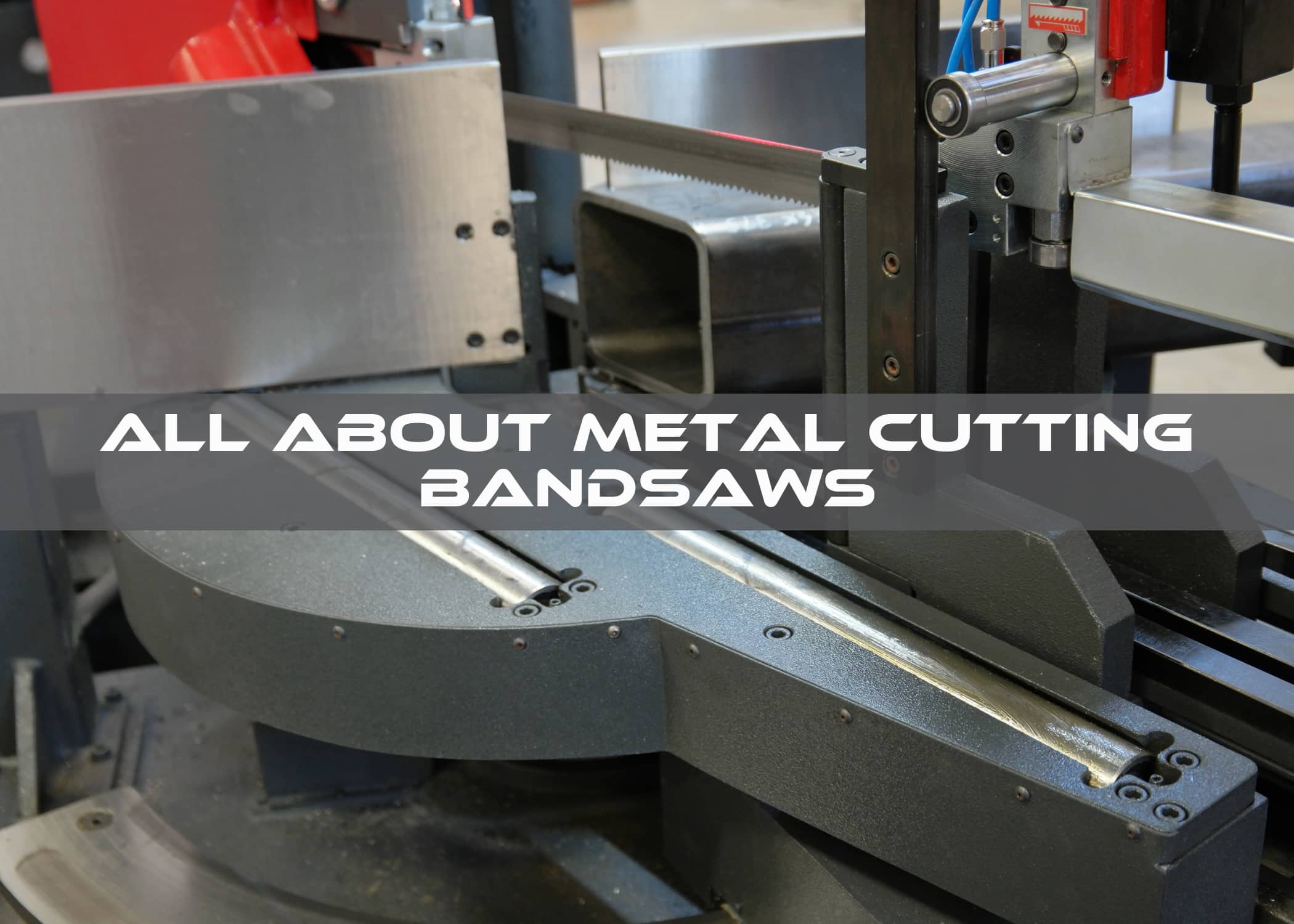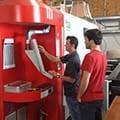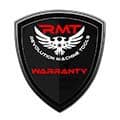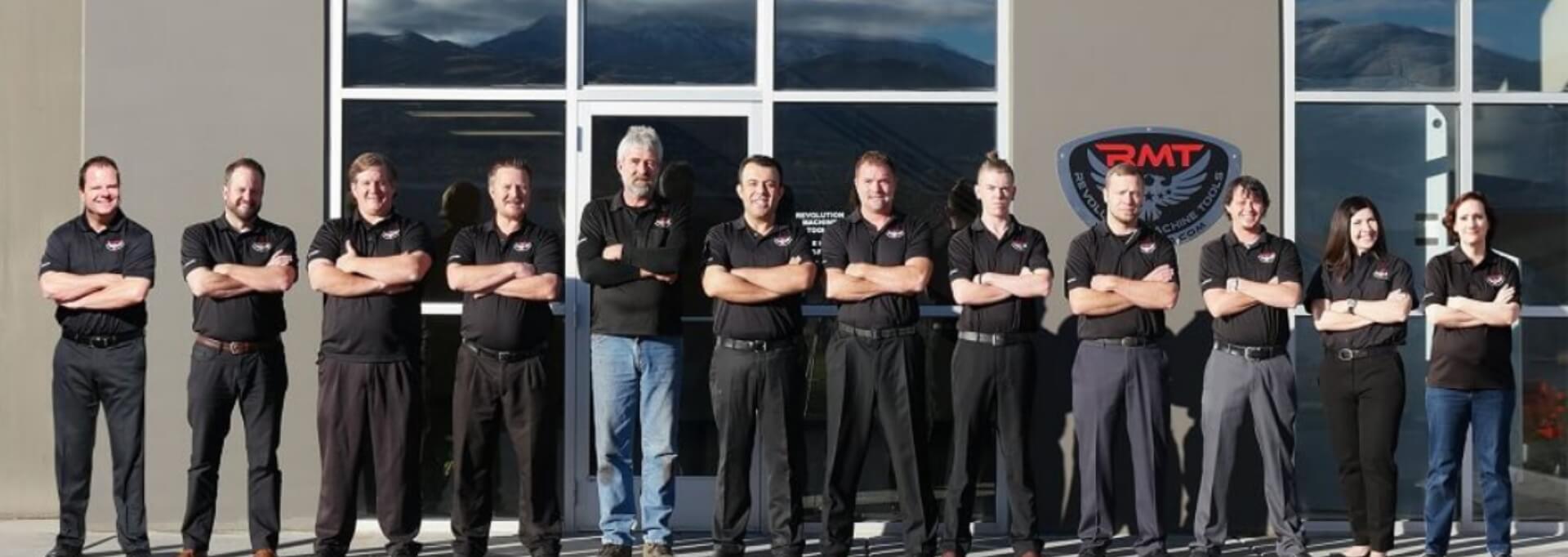Metal-cutting bandsaws are essential tools in the metalworking field. They offer precision and efficiency in cutting various types of metal, making them an asset in industries like manufacturing, construction, and automotive production.
The bandsaw has been around since the mid-1800s, being introduced as a woodcutting tool. While it was quickly adapted to other materials (such as meat cutting), it wasn’t until the early 20th century that technology progressed to the point that sturdier saws with harder blades could be manufactured that would effectively cut metal like mild steel.
Uses of Metal-Cutting Bandsaws
Metal-cutting bandsaws find applications in a wide range of industries:
- Metal Fabrication. These saws are indispensable in metal fabrication businesses and machine shops for cutting, shaping, and notching metal components used in structures, machinery, and equipment.
- Custom Metalwork. Artists and craftsmen use bandsaws for creating custom metal sculptures, artwork, and decorative items.
- Manufacturing. Metal-cutting bandsaws are used in the manufacturing of metal products, including components for the automotive, aerospace, and electronics industries.
- Construction. Portable bandsaws are commonly used on construction sites for cutting metal pipes, rebar, and structural steel.
- Maintenance and Repair. Bandsaws are essential tools for maintenance and repair work in many facilities, where they are used to cut and replace worn-out or damaged metal parts.
Types of Metal-Cutting Bandsaws
There are several types of metal-cutting bandsaws designed to meet specific cutting needs. They can be categorized by different characteristics they possess:
- Blade Orientation. Horizontal bandsaws are the most common type and are used for cutting large metal workpieces. Their blades move in a horizontal direction, making them suitable for straight cuts. Vertical bandsaws, in contrast, have blades that move in a vertical direction, making them ideal for intricate curved and irregular cuts. They are commonly used for making notches, holes, and detailed shapes in metal.
- Mitering Ability. While vertical bandsaws can cut material at an angle or in a shape because the metal workpiece is usually moved by hand by the operator on the worktable, horizontal bandsaws simply cut through material at a 90° angle unless they have a mitering feature. Straight cut bandsaws are more compact, more stable, and cost less, so many fabricators still prefer them. Single miter bandsaws are very popular since more and more fabricators need to cut an angle in tubing and structural pieces. Double miter bandsaws are the most expensive but are useful in a production facility that does quite a bit of angle cutting and may not have the luxury of time to remove and reposition workpieces to make a cut in the opposite direction elsewhere in the part (such as the two ends of a metal frame section).
- Operation Type. The most basic kind of horizontal bandsaw is a manual bandsaw, which requires an operator to be present at all types. The saw head needs to be raised by hand, then the material is manually fed into the machine and the vise is closed on it. The operator then starts the cut, which often can proceed with just gravity feeding the blade down through the workpiece due to the weight of the head. Manual saws are made in a pivot style, meaning that the head is attached to the table by a hinge at one end and pivots down at an angle through the material. Semiautomatic bandsaws use a hydraulic or pneumatic system to raise and lower the saw head, but operators still feed the material by hand. They can be either pivot style or double column, meaning the head comes down parallel to the workpiece traveling on two columns on either side of the machine. Automatic bandsaws can keep working cut-after-cut, even without an operator present, as they can be programmed to automatically feed material into position and clamp it in place, then reposition it for the next cut. They can also be either pivot style or double column.
Features of Metal-Cutting Bandsaws
Metal-cutting bandsaws come with various features that enhance their functionality and user-friendliness. Some common ones include:
- Variable Speed Control. Many bandsaws offer adjustable speed settings to accommodate different metals and cutting tasks. Slower speeds are typically used for harder metals, while faster speeds are suitable for softer materials.
- Automatic Shut-off. Safety is a key concern in metalworking. Bandsaws often come with automatic shut-off features to prevent accidents in case of blade breakage or other issues.
- Adjustable Vise. The vise secures the workpiece during cutting. Adjustable vises allow for precise clamping and positioning of the material.
- Coolant System. To prevent overheating and extend blade life, many bandsaws have built-in coolant systems. These systems use cutting fluid to cool and lubricate the blade during cutting.
- Digital Readouts. Some advanced bandsaws feature digital readouts that display important information such as blade speed and cutting angle, making it easier for operators to make accurate cuts.
- Blade Variations. Bandsaws use different types of blades, including bi-metal, carbide-tipped, and carbon steel blades. The choice of blade depends on the type of metal being cut and the specific cutting requirements.
Metal-cutting bandsaws are versatile and efficient tools that are crucial in various industries for cutting, shaping, and fabricating metal materials. With different types, features, and applications, they cater to a wide range of cutting needs, from precise and detailed work to heavy-duty industrial tasks. As technology continues to advance, further improvements in the design and capabilities of metal-cutting bandsaws can be expected, making them even more indispensable in the world of metalworking.
